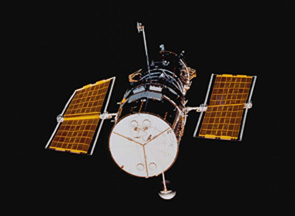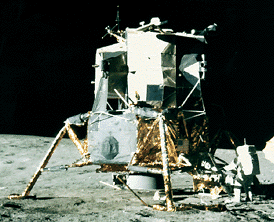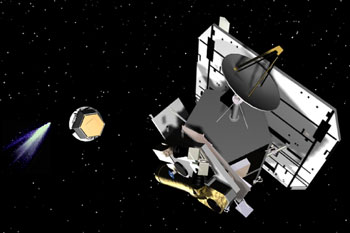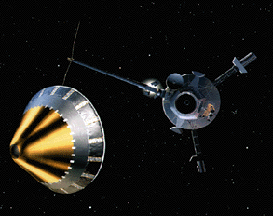The Kepler mission will search for habitable planets, and determine their absolute sizes.
Click on image for full size
NASA
Kepler Mission - a search for habitable planets
NASA launched the Kepler satellite. This mission is trying to find
Earth-like
planets around Sun-like stars. It has a 0.95-m telescope and
many digital cameras to watch
100,000 stars for 4-6 years.
Some planets will pass in front of their star. This will cause a brief
drop in the amount of light. This will tell us the size of the planet
compared to the star.
We do not always know the size of the star. So Kepler will look more
closely at 512 stars at a time. It will look for pulsations. This will
tell us the true size of the star. Then we can find the true size of the
planet.
You might also be interested in:

The Hubble Space Telescope (HST) is really neat! It was first launched in 1990, but scientists started building it in the 1970's! We have found all kinds of objects like stars, nebulae and galaxies. The
...more
Apollo 11 was the first mission that landed a person on the moon. On July 16, 1969, the U. S. rocket Saturn 5 was launched carrying the lunar landing module Eagle. The Eagle was released and it reached
...more
Apollo 12 was launched on Nov. 14, 1969 and arrived at the Moon three days later. Astronauts Charles Conrad and Alan Bean descended to its surface, while Richard Gordon remained in lunar orbit aboard the
...more
Apollo 15 marked the start of a new series of missions from the Apollo space program, each capable of exploring more lunar terrain than ever before. Launched on July 26, 1971, Apollo 15 reached the Moon
...more
NASA chose Deep Impact to be part of a special series called the Discovery Program. This program is for cheap, scientific projects. In May 2001, NASA said it was ok to start with mission development for
...more
Galileo was a spacecraft that orbited Jupiter for eight years. It made many discoveries about Jupiter and its moons. Galileo was launched in 1989, and reached Jupiter in 1995. The spacecraft had two parts.
...more
During 1966 through 1967, five Lunar Orbiter spacecrafts were launched, with the purpose of mapping the Moon's surface in preparation for the Apollo and Surveyor landings. All five missions were successful,
...more















